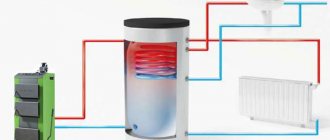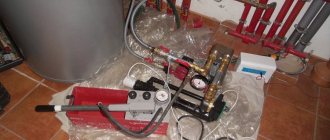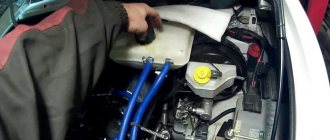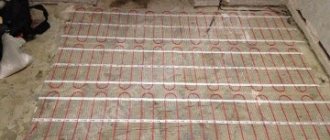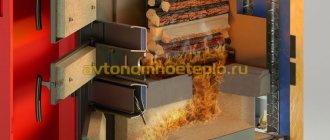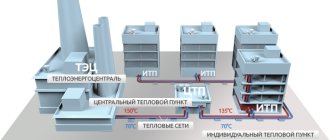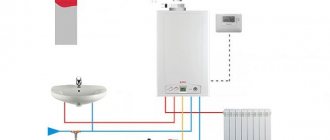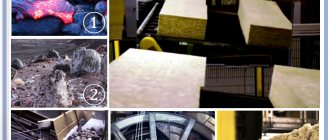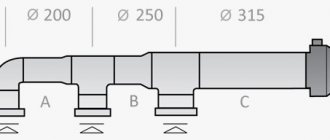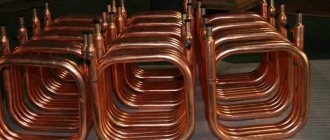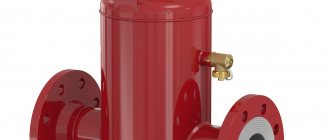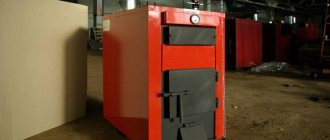Main and auxiliary equipment
A boiler plant is a structure or a separate room in which liquids or coolants involved in production, heating and production are heated. The coolant from the boiler room can be supplied to its destinations via heating mains and pipelines.
Boiler equipment comes in three types:
- heating;
- industrial - heating;
- energetic.
The underlying equipment remains almost unchanged. The boiler includes a water economizer, a firebox, an air and steam heater, and a fitting. For ease of maintenance, boiler installations are equipped with stairs and platforms.
Boiler room auxiliary equipment:
- traction equipment;
- controllers;
- pipelines;
- automation systems;
- water treatment devices;
- other equipment to assist in production.
The process of boiler room operation at the enterprise:
- With the help of equipment and with the help of maintenance personnel, fuel is loaded into the furnace.
- The air required for combustion is heated in an air heater to achieve savings in fuel consumption.
- The fuel combustion process provides air flow. Oxygen is supplied naturally through a grate or using a blower fan.
- Combustion products enter a separate cavity, where they cool, and are removed through the chimney using a smoke exhauster.
- The water, having gone through several stages of purification, enters the steam boiler.
- When heated, the water evaporates, accumulates in the drum and enters the steam collector, after which it is distributed to distribution points through pipelines for heating needs.
This is how a steam boiler works and produces steam used in production and heating. Savings are achieved by automating processes; manifolds and controllers are used to supply or shut off liquids and steam.
Auxiliary equipment of a modern boiler room
← previous articleHow to reduce the noise of a boiler room: at the design stage and with special means Boiler rooms make a lot of noise. They have many elements that make sounds: pumps, fans, pumps and other mechanisms. In principle, working in industry, with industrial equipment, one way or another forces a specialist to confront...next article →Which boiler houses are suitable for producing hot waterHot water is used for heating and providing consumers with hot water supply. It is produced by special hot water boilers, which we will talk about in this article...
Author: Alyansteplo
Date: 12/12/2015
A boiler room in its modern form is a complex complex of various mechanisms, including auxiliary equipment. Every detail matters: for efficient operation, for increased efficiency, for protection from emergency situations.
And if everyone knows about the boiler unit and burners, then not everyone knows what the auxiliary equipment of a modern boiler room is.
So, a boiler is a firebox, an air heater, an economizer, lining, fittings and fittings.
Auxiliary equipment is:
- Draft mechanisms
, including fans, smoke exhausters, flues, air ducts and chimneys, in other words, everything that supplies air to the firebox and removes combustion products from the system into the atmosphere. - Pump equipment
. Please note: it must comply with the boiler manufacturer's recommendations. The installation of low-power pumps is fraught with the formation of water hammer and destruction of the system, while high-power pumps can lead to a decrease in the reliability of the block boiler house and excessive energy consumption. - Equipment for heat exchange and water treatment.
- Fuel supply systems
that mix fuel from the bunker to the firebox. These include grabs, scraper, belt and skip conveyors. Such systems are used in solid fuel mechanized boiler plants. - Ash and slag removal systems
- crushers, bunkers, conveyors, including dry and wet. - Ash catchers.
- Chimneys and flues.
- Automation systems and instrumentation.
Actually, it all works like this: fuel flows through the fuel supply system into the furnace, where it burns. A blowing fan lifts air into the firebox, which is necessary for combustion, or air enters there naturally through the grate. Sometimes the air is heated in an air heater before being supplied. Flue gases heat the surfaces, are drawn into the convective heating surface, where they are cooled, purified and released into the atmosphere through the chimney.
Before entering the system, ordinary tap water undergoes filtration and deaeration procedures. Hot water and steam are supplied to consumers: they are used in radiators, heated floors, in production, etc.
To calculate the cost of the boiler room, please fill out the questionnaire for the boiler room. The questionnaire can be filled out online or downloaded. For any questions: phone email
Fill out the questionnaire online
Calculate the cost of the boiler room
You may also be interested in
Boiler power plant Boiler power plants are called mini-CHPs - small power plants that generate not only electrical, but also thermal energy for heating industrial or residential premises, as well as for providing facilities with hot water supply.
Calculator for converting natural fuel into conventional fuel Conventional fuel is a fuel whose calorific value of 1 kg or 1 nm³ is equal to 7000 kcal.
Prospects for the development of biofuels in Russia By “biofuel” in this case we mean pellets - special granules obtained from peat, wood and agricultural waste pressed into cylinders.
Why is regular flushing of the boiler room necessary? Flushing boiler rooms eliminates scale formed on heating elements and helps fight the causes of its occurrence.
What does a boiler installation consist of? A boiler installation is a whole complex of various devices connected into a single system, the task of which is to convert fuel into energy.
Process automation
Boiler automation is a complex process; it allows you to reduce human labor costs and increase the level of safety at the enterprise . The main work comes down to constant monitoring of the controller. The dispatcher must constantly monitor the indicators and set the necessary parameters for different technological stages of production using a controller and remote control.
Boiler equipment
Application of boiler equipment in industry
Boiler systems of low and medium power are widely used for various technological processes, heat supply, heating, ventilation and hot water supply systems of residential, public and industrial buildings and structures, industrial and agricultural construction sites, catering establishments, technological heat consumers in bathhouses, laundries, construction sites. In agriculture, steam generated by steam boilers is used on livestock farms for steaming feed, as well as for heating greenhouses and drying grain. In connection with the development of sparsely populated and hard-to-reach areas of the North and East, the importance of boiler plants of various capacities is increasing.
Coal, peat, wood waste, gas and fuel oil are used as fuel for boiler plants. Gas and fuel oil are effective sources of thermal energy. Their use simplifies the design and layout of boiler plants, increases efficiency, and reduces operating costs.
Boiler equipment is used to heat a coolant (most often water), with the help of which heat is transferred to various groups of consumers. Domestic boiler equipment is used for heating relatively small premises (apartments, shops, offices), and industrial boiler equipment is used for large objects (shopping centers, production workshops, residential areas, etc.).
Boiler equipment includes a variety of boilers, burners, heat exchangers, as well as block modules and chimneys.
The basis of any such system is a boiler in which primary heat exchange takes place. The energy of the burning fuel is transferred to the coolant (water, steam, non-freezing liquid), which is then distributed through the main pipes to the end consumers, where the second phase of heat exchange takes place: the thermal energy of the carrier is transferred to the air of heated rooms, bringing the temperature in them to values favorable for humans .
Boiler equipment. Kinds
All boilers, regardless of what fuel they use, are divided into
- single-circuit - designed only for heating the coolant;
- double-circuit - can also serve the hot water supply system.
Boilers, which are one of the most important types of boiler equipment, are divided into groups depending on the fuel used:
- solid fuel hot water boilers are the most common type of boiler equipment;
- Gas-fired hot water boilers (gas boilers) provide a relatively low cost of heat, and the environmental friendliness of gas boiler houses allows them to be placed even in residential areas. At the same time, gas boiler equipment has a higher cost compared to solid fuel;
- diesel boilers are another type of boiler equipment designed to generate heat. Such systems use fuel oil as fuel and require the use of diesel burners. The environmental friendliness of diesel boiler houses is much lower than that of gas boilers, but the cost of heat is also quite low. Most often, boiler houses with such equipment are located on the outskirts of populated areas;
- electric boilers - the most environmentally friendly way to generate heat is carried out using this particular boiler equipment. This boiler equipment does not depend on any fuel supply lines; only electricity is required, but the cost of the generated heat is higher than, say, gas boiler houses and coal boiler houses.
The boiler installation consists of a boiler unit and auxiliary equipment.
The main boiler equipment is a boiler, a combustion device, a superheater, a water economizer, an air heater, a frame with ladders and platforms for maintenance, lining, thermal insulation, cladding, fittings, fittings and flues.
Auxiliary boiler equipment includes blower fans, smoke exhausters, feed, make-up and circulation pumps, water treatment and dust preparation units, fuel transfer systems, ash collection and slag removal systems, boiler room flues and chimneys. When burning liquid fuel, the auxiliary equipment includes a fuel oil facility, when burning gaseous fuel - a gas control point or gas control unit.
Boiler equipment. Scroll
A steam boiler is a device consisting of a firebox and evaporating surfaces for evaporating steam consumed outside this device, with a pressure above atmospheric due to the heat released during fuel combustion.
A hot water boiler is a heat exchange device in which, due to an energy source (fuel), water is heated, which is under pressure above atmospheric pressure and is used as a coolant outside the device itself.
The combustion device of the boiler is designed to burn fuel and convert its chemical energy into heat. Boiler lining is a system of fireproof and thermal insulating enclosures or boiler structures designed to reduce heat loss and ensure gas density.
The boiler frame is a load-bearing metal structure that takes the weight of the boiler, taking into account temporary and special loads, and ensures the required relative position of the boiler elements.
Superheater - a device for increasing the temperature of steam above the saturation temperature corresponding to the pressure in the boiler. It is a system of coils connected at the saturated steam input to the boiler drum and at the output to a superheated steam chamber.
A water economizer is a device heated by fuel combustion products and designed to heat or partially evaporate the water entering the boiler.
An air heater is a device for heating air by fuel combustion products before feeding it into the boiler furnace.
Boiler fittings are special devices designed to regulate the flow of the transported substance, turn off and turn on the flow of gas, steam and water. According to their direction, valves are divided into shut-off, control, safety, control and special. Shut-off valves (valves, valves and taps) are designed to periodically turn on or off individual sections of pipelines. Control fittings (control valves and flaps) are used to change or maintain the pressure and flow of the transported substance in pipelines. Safety valves (weight, spring and check valves) are used to automatically open the passage if the pressure exceeds the permissible value, as well as to prevent the reverse movement of liquid or gas. Control fittings (control valves, level indicators, three-way valves for pressure gauges) are used to check the presence of a substance in the pipeline and determine its level. Special fittings (condensate drains and moisture-oil separators) are used to remove condensate and separate oil and other products from gas.
Boiler fittings - devices for servicing gas ducts and the boiler furnace: manholes, peepholes, slag and ash bunker valves, gas and air valves and dampers, explosion valves, as well as blowing devices. Manholes are designed for inspection and repair of heating surfaces, peepholes - for visual inspection of the furnace and gas ducts from the outside of the boiler, slag and ash bin gates - for periodic removal of ash and slag from the bunkers, gas and air valves and flaps - for shutting off gas ducts and regulating draft and blowing. Explosion valves release flue gases when the pressure in the furnace or boiler flue increases, protecting them from destruction. Blowers are used to remove ash and slag from heating surfaces (with a jet of steam or compressed air).
Feeding and make-up boiler equipment - pumps, tanks, pipelines are designed to supply water to the boiler or heating network (heating system).
Draft devices are designed to supply the air required for fuel combustion into the boiler furnace and remove combustion products from the boiler. They consist of blower fans, air ducts, gas ducts, smoke exhausters and a chimney, with the help of which the required amount of air is supplied to the firebox, the movement of combustion products through the flue ducts and their removal into the atmosphere.
The water treatment equipment of the boiler room is used to heat and soften feed water and consists of devices and devices that ensure purification from mechanical impurities and scale-forming salts dissolved in it, as well as to remove gases from it.
Fuel preparation equipment for a boiler house operating on pulverized fuel is designed to grind the fuel to a pulverized state; it includes crushers, dryers, mills, feeders, fans, grabs, conveyors and dust and gas pipelines.
Fuel preparation equipment for a fuel oil boiler house includes fuel oil pumps, coarse and fine filters, and fuel oil heaters.
Boiler room ash and slag removal equipment is designed to remove ash and slag and consists of hydraulic systems and mechanical devices: conveyors, trolleys, bunkers, etc.
Ash-collecting boiler equipment, cyclones, and ash collectors are designed to clean flue gases from ash particles.
The fuel warehouse is designed to store fuel; it is equipped with mechanisms for unloading and supplying fuel to the boiler room or fuel preparation equipment.
Thermal monitoring and automatic control devices include control and measuring instruments and automatic machines that ensure uninterrupted and coordinated operation of individual devices of the boiler installation to produce the required amount of steam specified by the parameter (temperature, pressure).
Burner is a device for mixing air (oxygen) with fuel in order to supply the mixture to the outlet and burn it here to form a stable combustion front (torch). Gas burners, heating oil burners - fuel oil nozzles, gaseous fuel and heating oil - combined gas and fuel oil burners. When burning pulverized fuels, pulverized coal burners and gaseous fuels are used.
